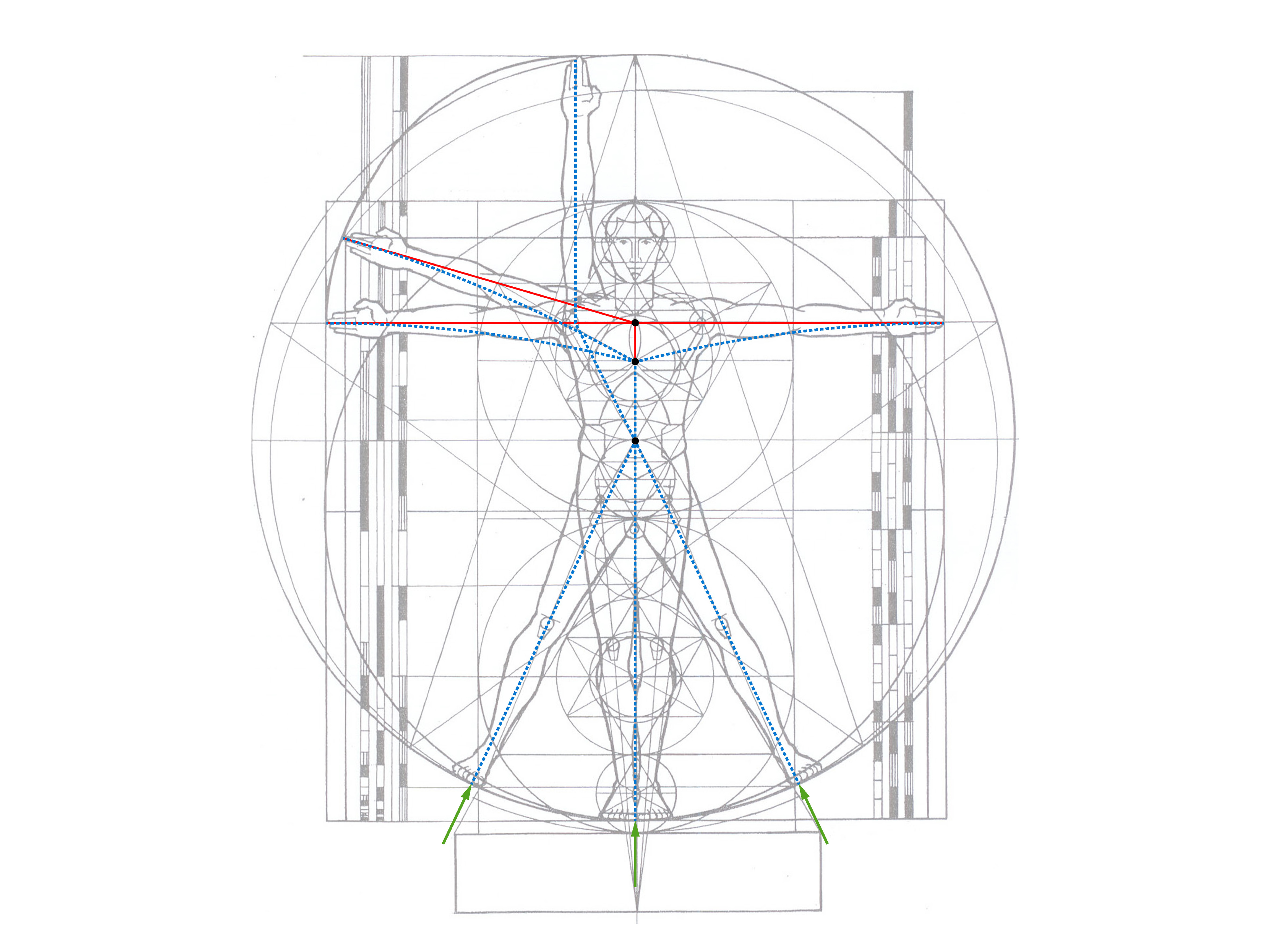|
Mind in structure - Introducing Embodied Perception to Architectural and Structural Design |
S. Wang 2020 - 2023 |

The Vitruvian Man cropped and erased measurements with the representation of graphic statics.
The separation between the disciplines of architecture and engineering, as well as the material and technological advancement under the context of digitalization in recent years, has brought structural design fallen into a new dilemma - that is focusing only on structural performance and taking performance as the only criterion of structural evaluation. However, the ultimate goal of structural design is about architectural space, and it is also curtailing to consider the human aesthetic and perception aspects. Thus, how to balance the impact of current technological progress on structural design and people’s pursuit of poetic and spiritual understanding of structure in architectural space has become an important topic. Taking structural design as a way of thinking, not just the material operations that uphold the building, structural design is fundamentally different from structural analysis and calculation - the latter being more of an engineering approach to the mechanical optimization of a fixed design. This research starts with the notion of “Strong Structures” - structures not only playing the role of load-bearing but also fundamentally shape the characters of architecture. With the aim of incorporating human embodied emotions and feelings into structural design, through studying the recent findings from neuroscience and psychology, the research attempts to summarize the relevant human perception principles of structures. Moreover, graphic statics can be used as an operational medium to link the neuroscientific and psychological human perception principles with mechanical principles, trying to introduce an embodied structural design thinking that could connect structure, space, and body. The structural design under the involvement of embodied thinking can evoke people’s bodily perception of spatial tension and thus be able to convey psychological meaning concerning the bodily experience. It can enable the building structure to exceed its load-bearing properties and extend structural design from many incomprehensible numbers into a medium that links the materiality of architectural representations with the abstraction of aesthetics and perception. Therefore, structural design will be complemented and extended in a broader sense.
last modified 22.3.2021